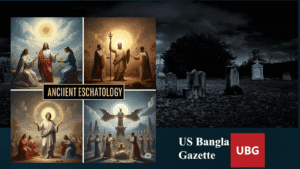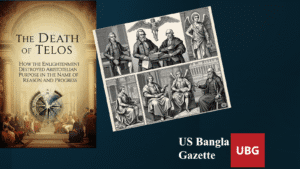Media Houses as Modern Tribal Chieftains: The Influence on Public Opinion and Independent Thought

The Power Dynamics: Media Houses as Tribal Chieftains
In analyzing the contemporary landscape of information dissemination, one can draw striking parallels between traditional tribal chieftains and modern media houses. Historically, tribal leaders held significant sway over the beliefs and actions of their communities. They acted as custodians of culture, mediators of conflict, and influencers of collective decision-making. Similarly, today’s media firms wield considerable power over public opinion, functioning as primary sources of information that shape the narratives within society.
Tribal chieftains often utilized storytelling as a means to instill shared values and maintain social cohesion. They employed oral traditions to communicate significant events, beliefs, and moral lessons, ensuring that the messages resonated with their audience. In a comparable manner, media houses curate and disseminate content that frames current events, often shaping societal perceptions and priorities. Through various platforms—be it news outlets, social media, or entertainment—modern media institutions play a pivotal role in crafting the collective consciousness.
The methods by which media houses influence public outlook bear resemblance to those of traditional leaders. Fostering a sense of belonging and identity is paramount; hence, media entities often aggregate stories that reinforce specific ideologies and cultural narratives. This curation not only engages the audience but also establishes hierarchical structures where certain voices are amplified while others are marginalized. As with tribal interactions, the framing of certain issues often leads to a polarized society, where narratives are contested and viewpoints are contested.
Lastly, the reliance on tribal kinship and loyalty reflects in today’s media consumption patterns. Audiences often gravitate toward media outlets that align with their personal beliefs and experiences, creating echo chambers. This fosters a sense of community unique to each outlet, reminiscent of the clans and tribes that rallied around their chieftains. Such dynamics highlight the profound impact these modern institutions have on societal norms and public opinion, establishing them as contemporary chieftains of narrative control.
The Formation of Echo Chambers
In the current media landscape, echo chambers have emerged as a significant phenomenon, primarily fostered by powerful media corporations. These echo chambers create environments where individuals are increasingly exposed to information that reinforces their pre-existing beliefs, while dissenting opinions are marginalized or omitted altogether. This selective exposure can lead individuals to become more entrenched in their viewpoints, ultimately shaping public opinion in ways that align with the interests of these media houses.
The concept of an echo chamber hinges on the idea that individuals gravitate towards media that reflects their views. Social media platforms and news outlets often utilize algorithms that prioritize content resembling users’ previous interactions, effectively isolating them from diverse perspectives. This creates a reinforcing cycle, where the repeated exposure to similar viewpoints solidifies their beliefs while creating a false perception of consensus. As a result, individuals become less likely to engage with opposing views, potentially reducing critical thinking and open discourse.
The psychological impact of living in such echo chambers is profound. Research indicates that being entrenched in homogeneous ideological groups can lead to heightened emotional responses toward opposing viewpoints. Individuals may develop an “in-group” mentality, viewing dissenters not only as individuals with different opinions but as threats to their identity and values. This phenomenon manifests in societal polarization, where constructive dialogue diminishes, and tribalism begins to take precedence over unity in discourse.
Consequently, the role of media organizations in shaping public opinion has expanded beyond mere reporting to actively influencing the cognitive frameworks through which individuals interpret information. As media houses play the role of modern tribal chieftains, their ability to dictate dominant viewpoints raises pressing questions about the future of independent thought and the health of public discourse. By critically assessing the echo chambers created by these entities, society can begin to understand the implications of such environments on democratic engagement and the broader social fabric.
Commercialization of Truth in Media
The landscape of modern media has evolved significantly, often prioritizing commercial interests over the core principles of factual integrity and truthful reporting. Many media outlets today operate under the pressure to generate revenue, leading to a notable shift towards sensationalism and a pervasive clickbait culture. This shift has resulted in an environment where the pursuit of attention often overrides the commitment to present accurate and balanced information.
In an age where information travels at lightning speed, media organizations frequently resort to emotional manipulation to captivate audiences. Rather than simply informing the public, they seek to provoke strong reactions that foster engagement, often at the expense of truth. Headlines designed to shock or provoke curiosity frequently lead to misleading narratives that distort public perception. Such practices not only compromise the integrity of the news but can also endanger the democratic process by creating environments where misinformation thrives. As skeptical consumers of media, individuals find themselves grappling with conflicting messages and competing narratives, often leading to confusion and unease about where the truth lies.
The motivations behind this trend are multifaceted, revolving primarily around financial gain. Advertiser expectations and audience metrics dictate content creation choices, shifting the emphasis away from in-depth journalism to what sells. Over time, these practices contribute to a gradual erosion of public trust in media. When audiences are conditioned to expect sensational stories, they may become desensitized to important issues that do not elicit the same emotional response. Consequently, this commercialized approach can lead to a disengaged and misinformed populace, raising concerns about the long-term consequences for society’s collective understanding of complex topics.
Regaining Independent Thought: Strategies for Media Literacy
In an era dominated by information dissemination, enhancing media literacy emerges as a crucial skill for individuals striving to reclaim their independent thought. By developing critical media literacy skills, people can begin to navigate the complexities of the information landscape, challenging the narratives presented by major media houses, which often function as contemporary tribal chieftains, shaping public opinion. A foundational strategy in this pursuit is the habit of questioning sources. Individuals should evaluate the credibility of the information presented to them by identifying the origin of news articles, scrutinizing the qualifications of the reporters, and considering potential biases that could shape the narrative.
Moreover, seeking out diverse perspectives is essential in fostering a well-rounded understanding of current events. Engaging with content from a variety of media outlets—ranging from mainstream news organizations to independent publications—can provide additional insights and challenge prevailing viewpoints. This practice does not only serve to broaden one’s understanding but also helps to mitigate the risks of groupthink, which can arise when opinions are solely derived from a singular source.
In addition, actively supporting independent media outlets is another powerful strategy in cultivating a landscape rich in diverse narratives. By subscribing to or sharing content from independent journalists and smaller news organizations, individuals contribute to the viability of alternative journalism, which is often more willing to explore issues beyond mainstream coverage. These platforms are likely to offer nuanced perspectives and foster critical discourse that encourages independent thought.
Through these strategies, individuals gradually build a robust framework for understanding media content critically, ultimately empowering them to make informed decisions. By regaining independent thought and resisting the influence of dominant media narratives, citizens can contribute to a more informed society, capable of thoughtful engagement with the world around them.







